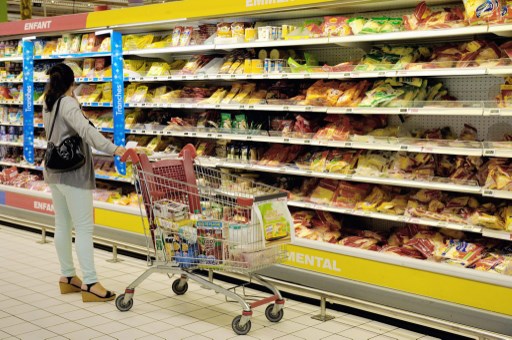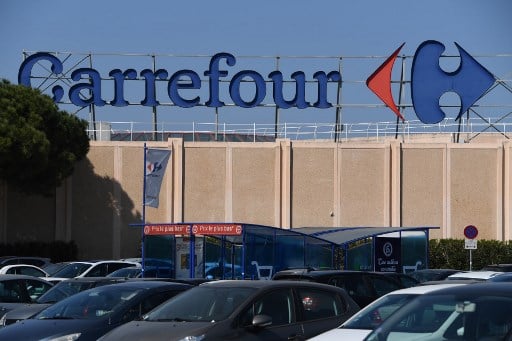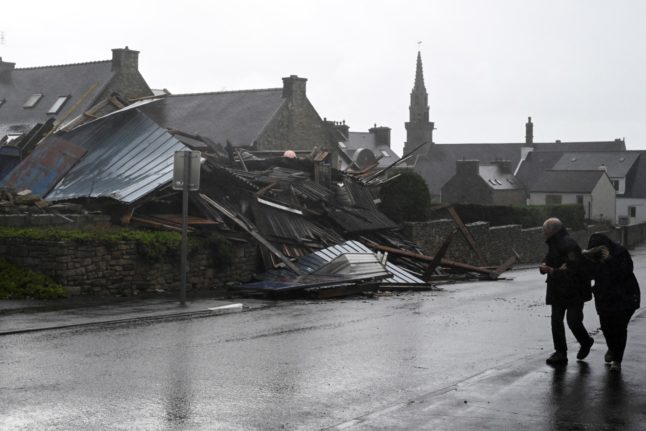This month French supermarket giant Carrefour announced a major restructuring of its business leading to up to 3,000 job losses.
That came just weeks after another big name, Auchan, said that it would be selling off 21 loss-making stores, with the potential loss of 700 jobs.
Carrefour, Europe’s largest retailer, says it intends to refocus on food, with restructuring in six sectors (petrol station cash registers, hi-fi household appliances and jewellery departments, in-store revenue processing, management and payroll services).
In total, France has more than 2,000 hypermarchés, which are defined as having at least 2,500 square metres of retail space, and the industry is dominated by four big names – Carrefour, Auchan, E Leclerc and Inter-Marché.
READ ALSO
- Not so supermarché? Why we either loathe or love French supermarkets
- Why does Paris have so many independent shops?
When the first hypermarchés were created in the 1960s the idea was groundbreaking – and at the vanguard of food shopping in Europe.
Visitors from Britain were astounded at the size of the stores and the variety of goods on display – everything from food and drink to household goods and garden furniture.
For many locals, a weekly shop became the norm at the giant out-of-town stores that provided everything under one roof.
And the stores still hold a special place in many local residents’ hearts.
But it seems that changing shopping habits – and competition from online sales – is putting the hypermarché under threat.
In April Auchan announced the latest in several years of financial woes for the company, and revealed that 21 of its stores, including the hypermarché at Villetaneuse in the Seine-Saint-Denis region – were not making a profit.
French retail specialist Frank Rosenthal told magazine Les Inrockuptibles that the main problems for the big stores are in the non-food sector.
The biggest stores now sell a dizzying array of products, from clothing and shoes to electrical items, and music, books and DVDs.
But it is this sector that has been hit the hardest by the rise of internet shopping.
“The hypermarché has never had so much competition. All sectors have competitors, much more than before,” said Rosenthal. “All the large specialised areas like DIY, sports, household appliances, textiles.”
A report by market analysis firm Xerfi was already warning in 2017 that hypermarkets were a “symbol of a society of mass consumption that today is largely rejected” and must ”urgently reinvent themselves.”

Changing shopping habits and online competition are putting the hypermarché under threat. Photo: AFP
They need to transform their commercial centres into attractive places where people come not just to buy things but for leisure or other experiences too, the report said.
This would also help what have traditionally been low-cost operations to move upmarket a notch or two.
Last year Carrefour launched a five-year plan to cut costs, boost e-commerce investment and seek a partnership in China with tech giant Tencent.
The plan notably includes expanding into convenience stores to reduce exposure to the group’s hypermarkets and having a greater focus on organic products and private labels.
Carrefour is often wrongly thought to have created the first hypermarchés in Europe. In fact it was a Belgian group, Grand Bazar, which opened the first mega-supermarkets, in 1961, which can take that claim to fame.
The death of the hypermarché has been predicted by many, but it is likely to remain a part of the French countryside for some time to come, though probably in a much altered form.



 Please whitelist us to continue reading.
Please whitelist us to continue reading.
Member comments